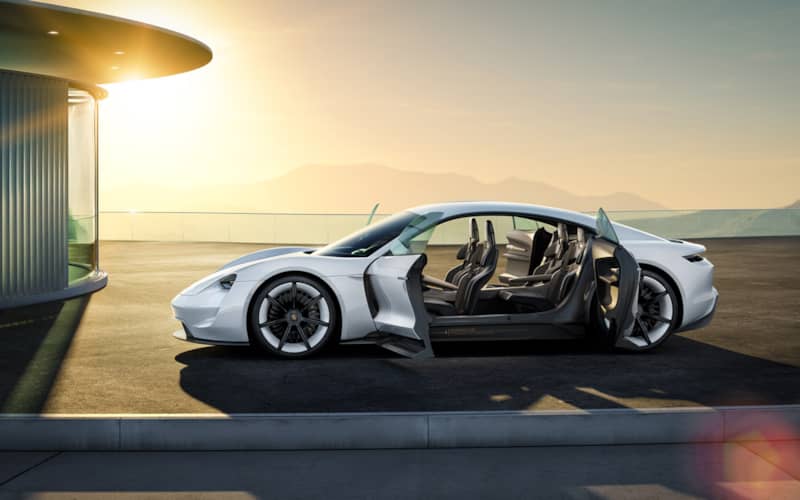Porsche Mission E: Greenlight to the Future
VW Group has taken some heavy hits this year as a result of their ongoing diesel emissions cheating scandal. Stock and sales plummeted and the illusion of German engineering supremacy was seriously questioned. While full ramifications of this intentional deception have yet to play out, the German powerhouse came up with just the right showstopper to counter all this negativity – releasing the Porsche Mission E Concept all electric sports sedan at the Frankfurt Auto Show.
The factory calls it, A Tribute to Tomorrow. And even better, Porsche announced that it was greenlit for production.
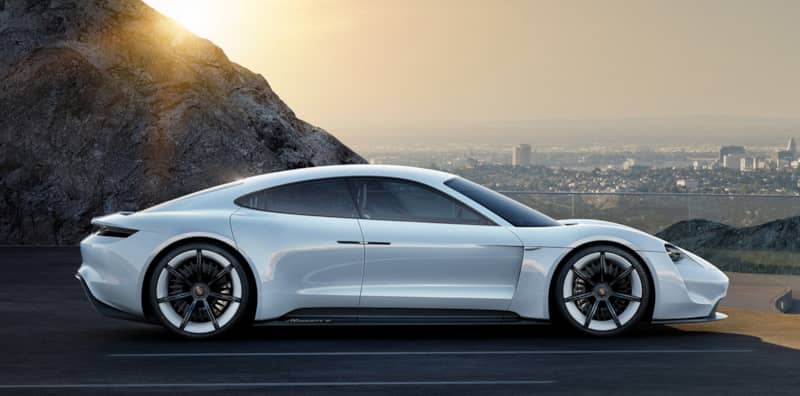
The last time Porsche moved so far away from a proven formula was in the 1970’s when the company felt that their classic 911 had been developed as far as it could go. Their answer was the 928 – a larger, V-8 powered, water-cooled, grand tourer that was intended to replace the older air-cooled car. Porsche’s vision of the future didn’t exactly set the world on fire and the consumer demand for the “outdated” 911 remained strong. Checked the prices on 1970’s 911’s lately? Now compare them to the value of a used 928. This rare misstep has influenced Porsche’s design philosophy ever since.
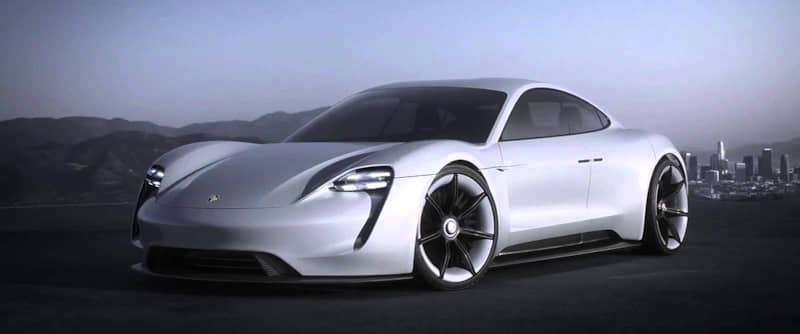
With Tesla squarely in their sights, the engineers at Zuffenhausen are working to beat Elon Musk’s flagship in every category. The Mission E performance figures are impressive, even dominating in the current ecar class. Porsche claims 600 horsepower turning all four wheels with a 0-62mph time in under 3.5 seconds. A 310 mile all-electric range, four-wheel steering and, oh yeah, those front and rear motors are derived directly from Porsche’s LeMans winning 919 racecar.
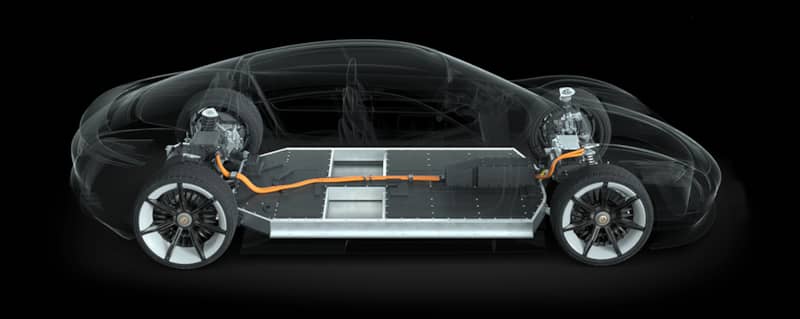
Impressive as all that sounds, stat-checkers will troll that those numbers- while incredible- don’t quite match the Tesla’s in it’s Ludicrous Mode. Porsche fans will say that the difference doesn’t matter- just look at the lines. Aggressive, modern and classic with enough styling cues to leave no doubt which factory built it. With a nod to their classic shape, the Mission E profile suggests a kind of stretched four-door 911. Which would you rather be driving? Which would you rather be seen in?
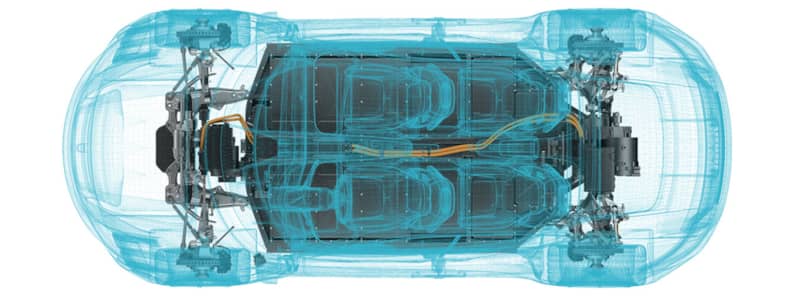
Recognizing that the weak spot in Tesla, and in ALL electric cars, is the long charging time required between usage, Porsche decided that the most direct way to improve this is to change the way ecars are charged. Their conceptual Mission S system puts 800 volts to the charging socket. They claim that this is good for an 80% charge in just 15 minutes that should be good for about 250 miles. Comparing to the Tesla Supercharger, which at 480 volts takes 30 minutes to top up with about 170 miles worth of electricity, the Mission S has a distinct convenience advantage.
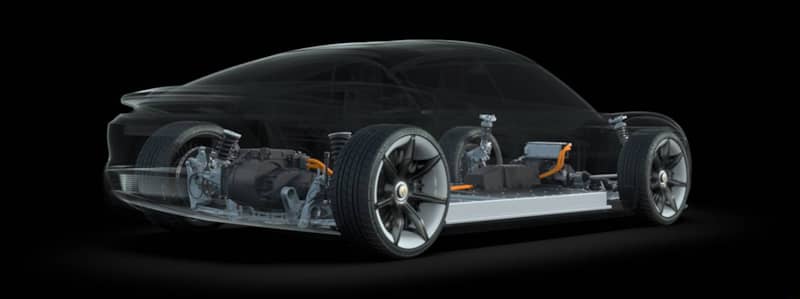
While Porsche understands that the “desire to be seen in” is a key to a cars success, in this case they are trying to elevate an entire class of cars. Driver integration is a high priority. The traditional 911 five-gauge dashboard is replicated in OLED. This virtual rendering of a classic layout allows an effective eye-tracking system that allows the driver to select menus and sub-menus by looking at the desired option and then pressing a button on the steering wheel. Gesture control operates the entertainment and navigation systems. Side-view mirrors have been replaced by video monitors that project on to displays in the lower corners of the windshield.
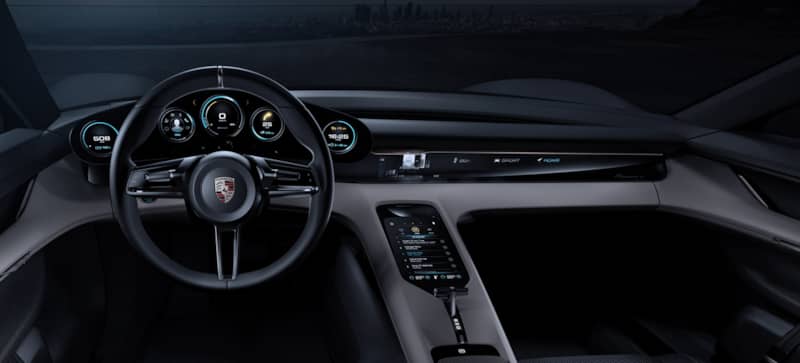
Whether some or all of this technology makes it from the concept to the promised production version doesn’t matter. The mere existence of this working tech promises that eventually it will make its way into other road going vehicles. We keep hearing rumors about a new all-electric VW MicroBus. If this happens, how great would it be to get an 80% charge in 15 minutes after a day of beach cruising?
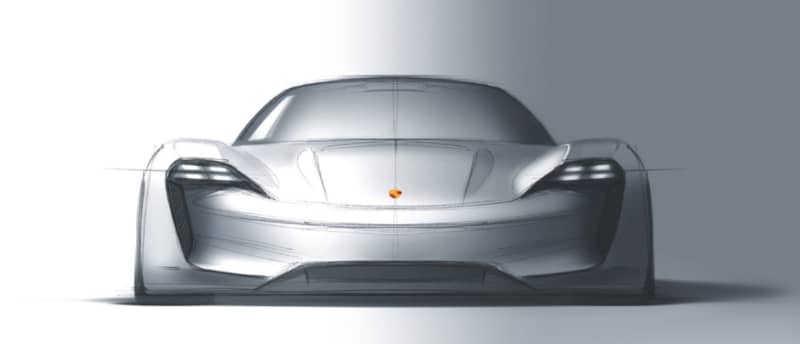
This is a Porsche, after all. During the concept unveiling ceremony, Porsche matter-of-factly dropped word that the Mission E had stormed the Nürburgring Nordschleife with a sub-eight minute lap time. They want to make one thing clear. Porsche- and that means The Volkswagen Group- is going to lead the way in future technologies, in efficiency, performance and design. It is unlikely that every feature and styling cue will make it to production (projected to be around 2019), but if the Mission E is a sample of the performance ecars to come, then the future can’t get here quick enough.
